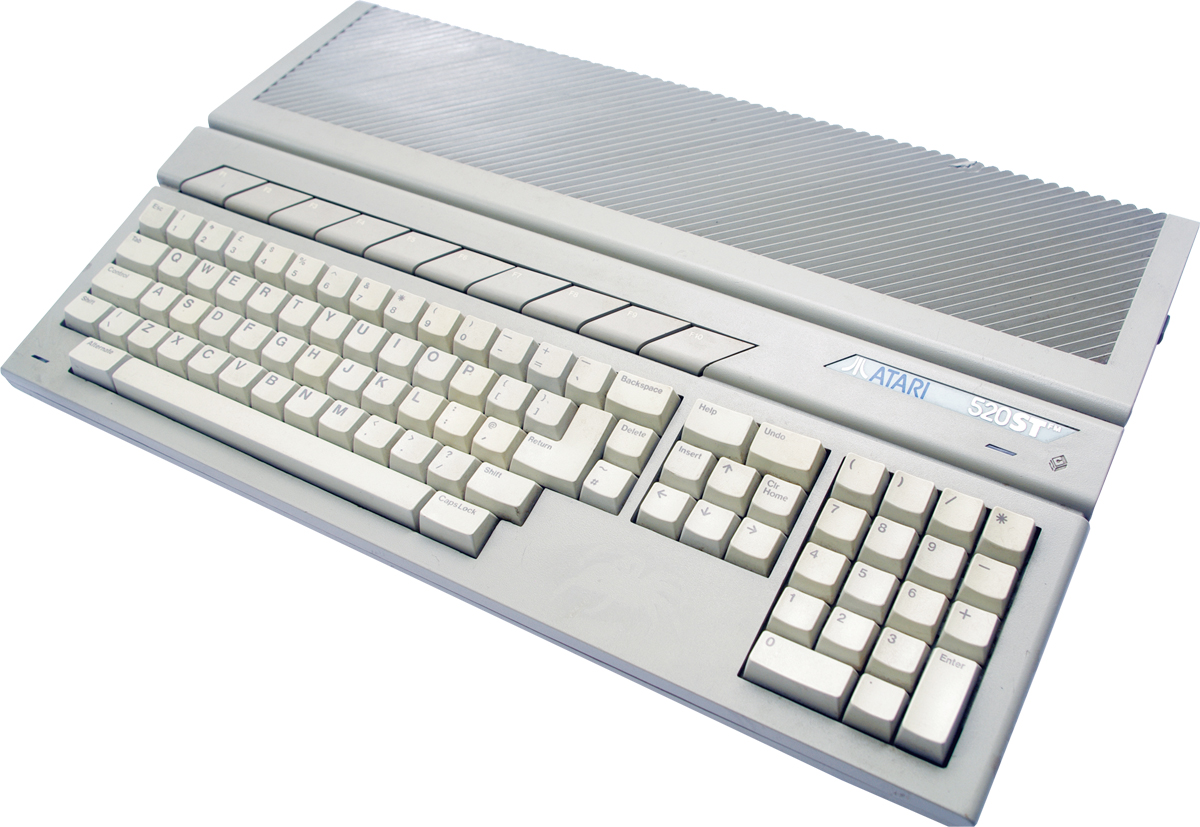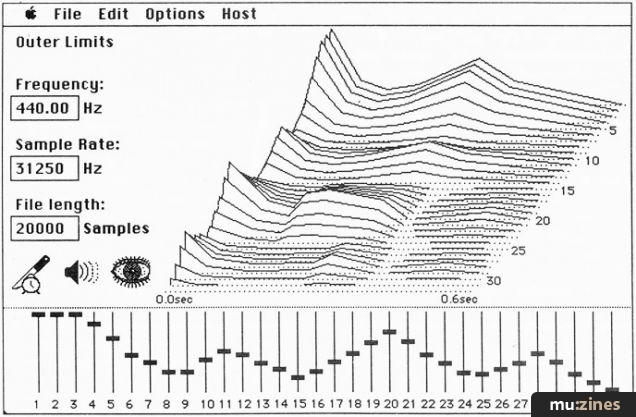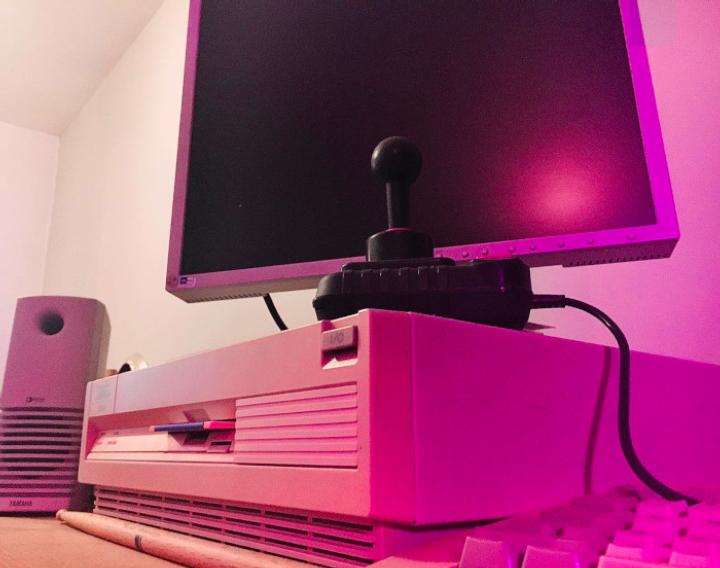Computer Music Chronicles: The 90's pt.1
US Older Music Machines & the People Who Still Use Them 12/01/24

|
Atari, Amiga, PC, Mac. These were your main choices as a music maker in the 90's, if you needed a computer for sound generation, MIDI shenanigans or the nascent art of direct-to-disk recording. You might be aware that I'm an Amiga fan, so I have a heavy bias towards that machine, but the reality is that each platform had something special to offer. This was bound to happen, because the computer landscape of the 80s & 90s was filled with absolute geniuses who managed to work miracles with limited hardware designs.
The Atari ST

The ST was blessed with a number of features, out of the gate, that made it a natural choice for the music studio. Midi Ports built right into the side (with rock-solid timing, jitter as low as 0.18ms!) and a high-res 640x400 display made this cost-effective computer the generally accepted winner of the 90's computer music wars. Even now, when I mention music making on the Amiga, people still ask me why I don't just use an ST(!)
Due to this early lead, Steinberg (you may have heard of them) leant a great deal of support to the system. Other interesting software included Digidesign's Softsynth, a non real-time additive synth with which you could generate synthetic multi-samples and dump them to your sampler. (Mac Version Pictured)

And truthfully, in the end, it was interfacing with external instruments that mostly made the ST shine; including a fair few products that were released with just the Atari machines in mind. The ADAP Soundrack (used for creepy voices in Twin Peaks) added 6-voices of 16-bit sample playback to the machine, with a nice looking user interface. The Evolution EVS-1 on the other hand, was a multi-algorithm digital synthesizer with FM, VOSIM and other exotic synthesis types, alongside PCM drums. You couldn't edit it from the front panel, so all of the sound design was done on the ST's screen. Later PC-based editors also exist.
The ST's internal sounds weren't too hot at first, featuring an antiquated AY/YM chip (capable of square waves and digital noise). But soon they added two PCM channels, and later on introduced the Falcon '030 model to the range, featuring an onboard DSP! Some truly impressive music exists for the Falcon & I humbly suggest that you go and listen to some!
Commodore Amiga

The ST is quite simple to understand musically (a consumer soundchip for games, MIDI ports for professional use) but the Amiga's flexible architecture means that it can be many things to many people. Some of these things were certainly up to the professional standards of the day, but some of them are decidedly lofi. It's precisely this quirky character that makes for a hidden weapon in the studio though. The Amiga performs:
- 4 channels of 8-bit, 28Khz sample playback, with no CPU overhead and no extra hardware required. (Astonishing in 1985, a little lo-fi for 90's standards - but that didn't stop many electronic musicians!)
- Sampling via an inexpensive parallel port interface
- Midi in/out via an inexpensive serial port interface
- Real-time effects (these are pretty lo-fi, but cool nowadays!)
- Non real-time synthesis, for dumping to a sampler
- Real-time 4 voice polyphonic synthesis (Again astonishing, many synthesis types with pretty-good fidelity!)
- The ability to sequence samples into full songs (.mods!)
- 16-bit sound-cards available, especially for the larger models
- Syncs to video signals for multi-media uses, video editing, installations, etc!
MIDI was always on the table for the Amiga, but was a bit late to the party. In 1990, Commodore introduced the camd.library as a universal system for handling MIDI IO (including between programs!) but by then of course, the ST was already king. I still need to scientifically test the jitter and latency of the Amiga by the way, it feels pretty rock-solid but I'm not sure if it's quite ST rock-solid. Anyhow, there are some good MIDI sequencers for the machine, including Steinberg Pro-24 the venerable Bars & Pipes, but these programs have not entered the awareness of popular culture, where Amiga is remembered mainly for sample-based tracker music. Personally, I use Octamed Soundstudio, a tracker that can handle samples and MIDI data simultaneously. This allows me to send 8-bit Amiga audio into my modular, whilst controlling it via the same computer! Very fun.
As a 12 year old, getting a 2nd-hand Amiga in 1995 was a life-changing event. Being able to arrange and sequence samples, remixing other people's tracks and forging my own musical identity, were irreplaceable experiences. I still regularly use my machines, sometimes utilising them in tracks, but sometimes just making weird sounds! This week, I discovered a long-forgotten piece of software called Synthia II and enjoyed my time with it. I'll include this below alongside an example of my musical work.
If you'd like to learn more about the Amiga, there's a fantastic documentary called Viva Amiga that contains an insightful seciton on Amiga music. Additionally, If you'd like to read through a treasure trove of Music/Computer related articles, then head on over to Mu:zines and feast your eyes on their collection: https://www.muzines.co.uk/features/8
Next time, we'll take a look at the all-conquering PC & the Apple Macintosh!
Posted by MagicalSynthAdventure an expert in synthesis technology from last Century and Amiga enthusiast.
< More From: MISCELLANEOUS
- 4 Software Synths that Became Hardware! 02-May-24
- The Tunes in Tokyo Train Stations 30-Apr-24
- 5 Ingenious Ways Synth-makers Saved Memory 26-Apr-24
- 3 of the Synth World's Most Outrageous Easter Eggs! 23-Apr-24
- 5 Firmware Updates that Totally Changed the Game 09-Apr-24
Even more news...
Want Our Newsletter?
More...
Revisions that turned synths into brand new machines






